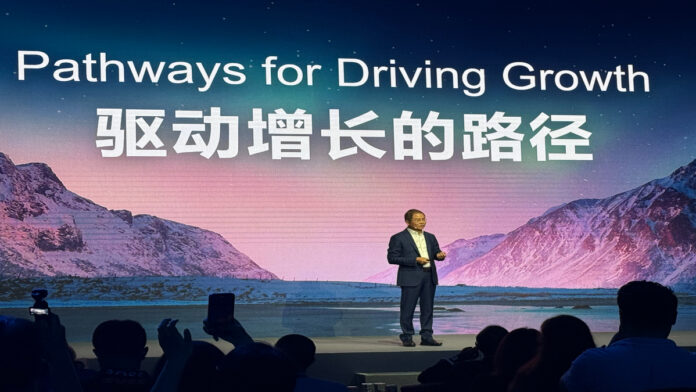Huawei laid out a four-part roadmap to accelerate industry growth during a keynote at MWC in Shanghai, suggesting livestreamers represent a lucrative user segment, growing from 10 million in 2022 to 130 million in 2030.
In sum — what to know:
High-value users – Huawei sees strong growth opportunities in serving emerging user segments such as delivery riders and livestreamers – groups with higher-than-average data and voice usage.
HD video push – a coordinated industry effort is needed to address the supply gap in HD video, a key driver of data consumption and network monetization potential.
AI and FTTR for SMEs – fiber-to-the-room (FTTR) and AI connectivity offer telcos a way to unlock new value in the small business market, enabling better Wi-Fi and smarter services.
Huawei chairman Eric Xu laid out a four-part roadmap to accelerate telecom growth during a keynote at MWC Shanghai 2025, urging operators to adapt to shifting user behaviors and fast-evolving demand driven by 5G-Advanced (5G-A), artificial intelligence (AI), and high-definition video. Xu said revenue growth is stagnating in mature markets, with basic consumer needs largely satisfied and a surplus of infrastructure investment.
To address this, he outlined four pathways to drive new growth.
Targeting new segments
The first area of focus is identifying high-growth user segments. Xu highlighted delivery riders and ride-hailing drivers as heavy mobile users, noting that in China, food delivery riders average 800 minutes of voice usage per month – 1.6 times more than the average user.
Livestreamers are also emerging as a highly profitable segment. Their numbers are expected to rise from 10 million in 2022 to an estimated 130 million by 2030. “Livestreamers can use as much as 100 GB of data per month, generating four times the ARPU of an average user,” Xu said. He added that other emerging use cases – including esports, smart glasses, and mobile work on high-speed trains – further underscore the need for tailored connectivity.
Ecosystem for HD video
Xu called for a stronger industry ecosystem to support HD video consumption, which remains underdeveloped. “Only 22% of mobile video traffic is currently 1080p or higher,” he said, citing bandwidth costs for OTT providers, restrictive pricing policies, and device limitations as key obstacles.
“Carriers need to price outbound bandwidth more reasonably and encourage OTTs to deliver more HD content,” he urged. He also called on OTT providers and device manufacturers to improve the quality and efficiency of mobile video experiences, which would, in turn, help raise user engagement and ARPU.
5G for connected vehicles
Xu emphasized the need to extend 5G connectivity to vehicles, unlocking a wave of connected-car services. But he acknowledged hurdles remain. “Carmakers are reluctant to adopt 5G due to high intellectual property costs and expensive T-Boxes,” he said. He called on the GSMA to help reduce these barriers and proposed a dual model – B2C for in-cabin experiences and B2B for vehicle telemetry.
FTTR and AI for small business
Finally, Xu highlighted micro and small businesses as a major growth frontier. He said FTTR – already successful in high-end residential broadband – can now be applied to small commercial environments.
“This kind of FTTR solution can provide full Wi-Fi coverage via high-speed, low-latency, and stable networks,” Xu said. With over 500 million small businesses worldwide, Huawei sees significant upside. “Serving these businesses with FTTR will unlock substantial new opportunities,” he added, particularly as AI-integrated services become increasingly common.

